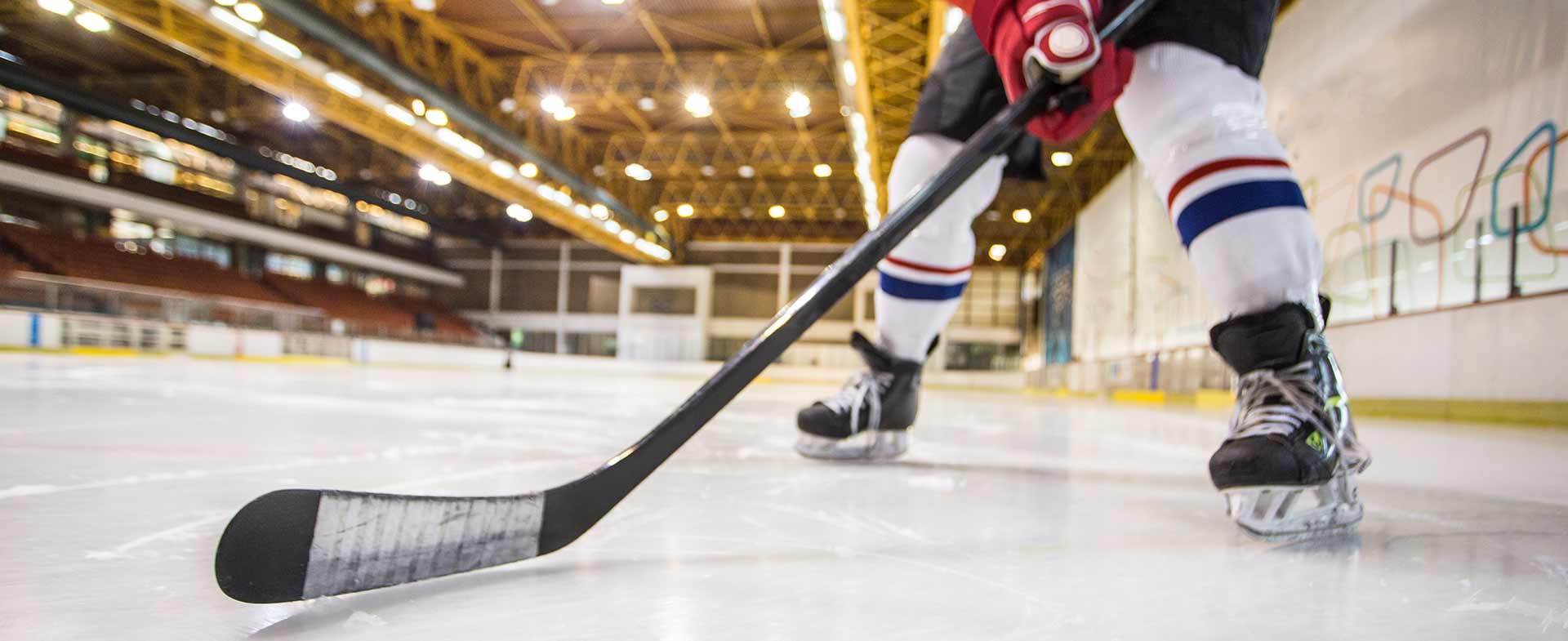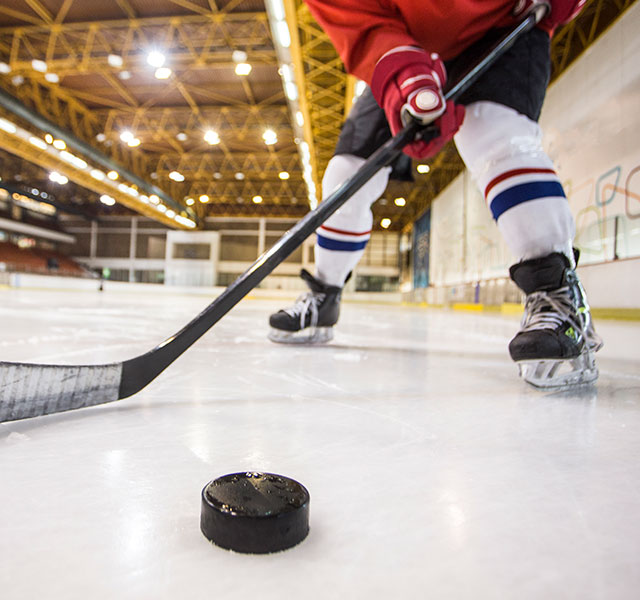Playing any sport involves some risk of injury; depending upon the sport, the risk level and type of injury varies. For high-collision sports – contact sports like football and hockey – the most common injuries are those that involve your upper extremities, says T. Sean Lynch, M.D., a sports medicine and orthopedic surgeon at Henry Ford Health.
Here, he shares injuries to be aware of, treatment methods and ways to lower your risk of injury.
Shoulder Injuries
An integral part of hockey is “body checking,” or when a player checks their hip or shoulder against an opponent to interfere with their play. So it’s no surprise, then, that shoulder injuries are one of the most common injuries in this sport.
“Colliding into another player at full force can result in a broken collarbone or a dislocated shoulder,” says Dr. Lynch. “If the collarbone is minimally fractured or non-displaced, a sling can be used while it heals. But if it’s severely fractured or displaced, a cast may be required, or surgery with a plate and screws to hold the bone in place.”
A dislocated shoulder will be placed back in by a medical expert on the sidelines or in the emergency room. But to reduce the risk of shoulder injuries in the first place, it’s important to wear the appropriate equipment that your sport requires – so having shoulder pads that fit well, for example.
Working on your upper body strength can also help prevent injury. “Strong muscles decrease the load on your joints,” says Dr. Lynch. “Make sure your rotator cuff is strong, as it can help protect the shoulder joint to decrease the risk of dislocation. It acts as a secondary stabilizer of the shoulder joint.”
Even when taking these preventative measures, sometimes sustaining a shoulder injury – like a broken collarbone – is just dumb luck. “Unfortunately, you can be strong but if you take the right hit in the right circumstances, you can break your collarbone,” says Dr. Lynch.

Go Where The Pros Go
Make an appointment
Head Injuries
Concussions in high-collision sports are an important injury to be aware of. Of course, it’s essential to wear helmets, but they don’t always prevent concussions – as high-speed collisions are the greatest reason for concussions in hockey and football. Because of this, it’s a good idea to get baseline concussion testing before the season starts.
“In the event that you do sustain a concussion, baseline concussion testing helps with recovery,” says Dr. Lynch. “It evaluates your normal brain function to test for neurocognitive abnormalities. If you do end up sustaining a concussion, the results of your baseline concussion test will be compared with your injury test results to see how the concussion has affected your brain. It can help determine your recovery plan.”
You should also be aware of the signs and symptoms of a concussion so you can get evaluated as soon as possible. Symptoms of concussions don’t always appear right away; sometimes it takes a few days. Symptoms include:
- Difficulty balancing and dizziness
- Fatigue
- Headache
- Light sensitivity
- Nausea or vomiting
- Numbness or tingling
- Sensitivity to sound
- Anxiety, depression, irritability or mood swings
- Confusion, difficulty concentrating, memory problems
Hip injuries
Conditions like hip impingement and osteoarthritis can also be common among athletes who play high-collision sports – especially among hockey goalies, thanks to the frequent, repetitive and extreme hip motions that are required when guarding the net.
“Hip impingement occurs when extra bone forms around the hip joint. It basically means that you’re trying to fit a square peg into a round hole,” says Dr. Lynch. “Osteoarthritis of the hip occurs from wear and tear of cartilage in the hip joint. It often affects older people but can affect athletes at a younger age due to increased damage.”
Symptoms of hip impingement include a deep, aching pain in the front of your hip or groin. Symptoms of osteoarthritis include pain, joint stiffness, tenderness and limited range of motion. You might also hear a cracking (also called crepitus) when you move your hip. Both conditions may be diagnosed via physical exam, X-ray or MRI.
Non-operative treatments are usually offered first, like physical therapy to strengthen the muscles around the hip joints, and over-the-counter anti-inflammatories and steroid injections to ease pain and inflammation. But for athletes, Dr. Lynch says surgery is often eventually necessary for a long-term solution.
To stave off injury, warm up properly before games and practices, wear the appropriate padding, and strength train to ensure your core, hip and back muscles are strong. It not only decreases the likelihood of hip issues but may also help lessen pain associated with hip conditions, should you sustain an injury.
Reviewed by T. Sean Lynch, M.D., a sports medicine and orthopedic surgeon at Henry Ford Health who sees patients at the Henry Ford Center for Athletic Medicine and Henry Ford Medical Center—Plymouth.



